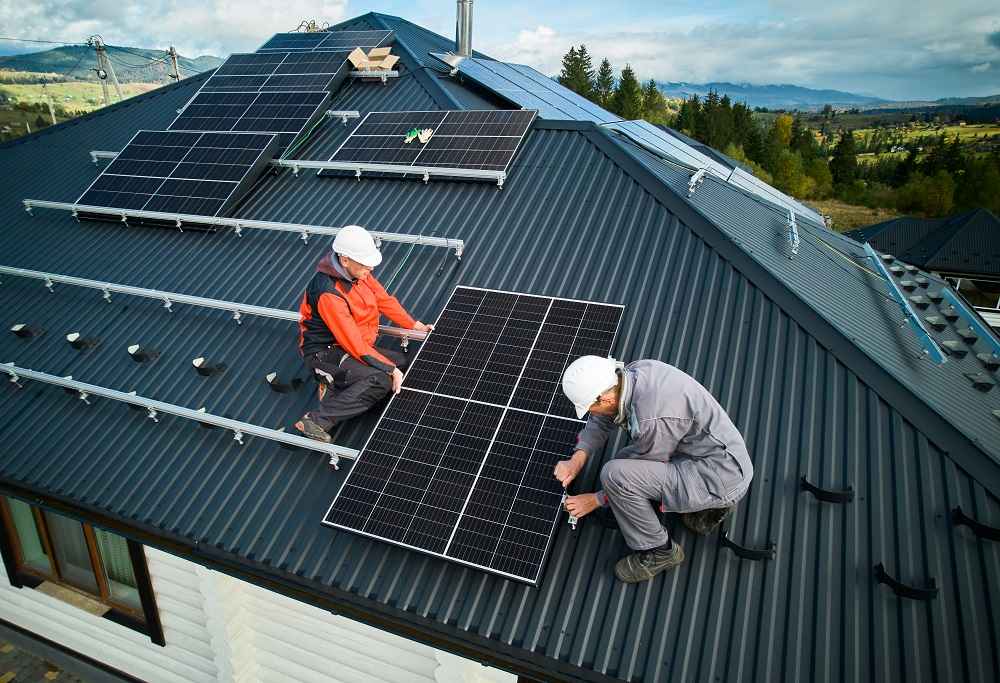Photovoltaic solar energy, commonly known as solar power, is a cornerstone of the renewable energy landscape. By converting sunlight directly into electricity using solar panels, this technology offers a clean, sustainable, and increasingly affordable way to meet our energy needs. In this article, we’ll explore the diverse applications of photovoltaic solar energy, highlighting how this technology is transforming various sectors.
Residential Solar Power
One of the most widespread applications of photovoltaic solar energy is in the residential sector. Homeowners are increasingly turning to solar panels to reduce their electricity bills and minimize their carbon footprint. A typical residential solar power system consists of solar panels installed on the roof, an inverter to convert the direct current (DC) produced by the panels into alternating current (AC) used by household appliances, and a meter to monitor energy production and usage.
The benefits of residential solar power extend beyond cost savings. By generating their own electricity, homeowners gain a measure of energy independence and protection against rising utility rates. Additionally, many regions offer incentives such as tax credits, rebates, and net metering programs that allow homeowners to sell excess electricity back to the grid, further enhancing the economic viability of solar installations.
Advancements in solar technology are also making it easier for homeowners to adopt solar power. Innovations such as solar shingles and building-integrated photovoltaics (BIPV) enable the seamless integration of solar cells into roofing materials and other building components, maintaining aesthetic appeal while harnessing solar energy.
Commercial and Industrial Solar Power
Photovoltaic solar energy is also making significant inroads in the commercial and industrial sectors. Businesses are installing large-scale solar arrays on rooftops and unused land to offset their energy consumption and lower operational costs. These systems not only reduce electricity bills but also enhance corporate sustainability profiles, which is increasingly important to consumers and investors alike.
For industrial applications, solar power can be used to run heavy machinery and power manufacturing processes. Solar energy systems can be tailored to meet the specific energy needs of various industries, from agriculture to technology. For example, in agriculture, solar panels can power irrigation systems, reducing the reliance on fossil fuels and enhancing the sustainability of farming operations.
Moreover, companies are leveraging solar power to achieve green certifications and compliance with environmental regulations. This not only improves their market competitiveness but also contributes to broader environmental goals by reducing greenhouse gas emissions and reliance on non-renewable energy sources.
Solar Energy in Remote and Off-Grid Locations
One of the most transformative applications of photovoltaic solar energy is in providing electricity to remote and off-grid locations. In many parts of the world, particularly in developing countries, access to reliable electricity remains a significant challenge. Solar power offers a viable solution, enabling communities to leapfrog traditional energy infrastructure and gain access to clean, reliable electricity.
Solar energy systems can power homes, schools, and clinics in remote areas, improving quality of life and fostering economic development. Solar-powered water pumps, for example, can provide access to clean water, while solar lighting extends productive hours after sunset. Additionally, solar power can support communication networks, enabling connectivity and access to information.
Off-grid solar systems are also critical in disaster relief scenarios. In the aftermath of natural disasters, where conventional power infrastructure is often damaged, solar power provides an immediate and resilient source of energy. Portable solar units can be rapidly deployed to provide essential services, such as lighting, refrigeration for medicines, and charging stations for communication devices.
Innovations and Future Prospects
The field of photovoltaic solar energy is continuously evolving, with innovations driving down costs and improving efficiency. Emerging technologies such as perovskite solar cells and bifacial panels promise higher efficiency rates and greater energy yields. These advancements are making solar power more competitive with traditional energy sources and expanding its applicability.
In addition to technological innovations, new business models are facilitating the adoption of solar energy. Community solar programs, for instance, allow multiple participants to benefit from a single solar array, making solar power accessible to those who cannot install panels on their own properties. Similarly, solar leasing and power purchase agreements (PPAs) enable homeowners and businesses to go solar with little or no upfront cost, paying for the energy produced instead.
The integration of solar power with energy storage systems is another exciting development. Batteries such as those used in Tesla’s Powerwall can store excess solar energy generated during the day for use at night or during periods of low sunlight. This enhances the reliability and flexibility of solar power, making it a more viable primary energy source.
In conclusion, photovoltaic solar energy is revolutionizing how we produce and consume electricity across various sectors. From residential rooftops to industrial complexes and remote villages, the applications of solar power are vast and varied. As technology continues to advance and costs decline, the role of solar energy in our global energy mix will only grow, paving the way for a cleaner, more sustainable future.


